Tim Wilson is baacccckkkkk and in the Mural Hall.
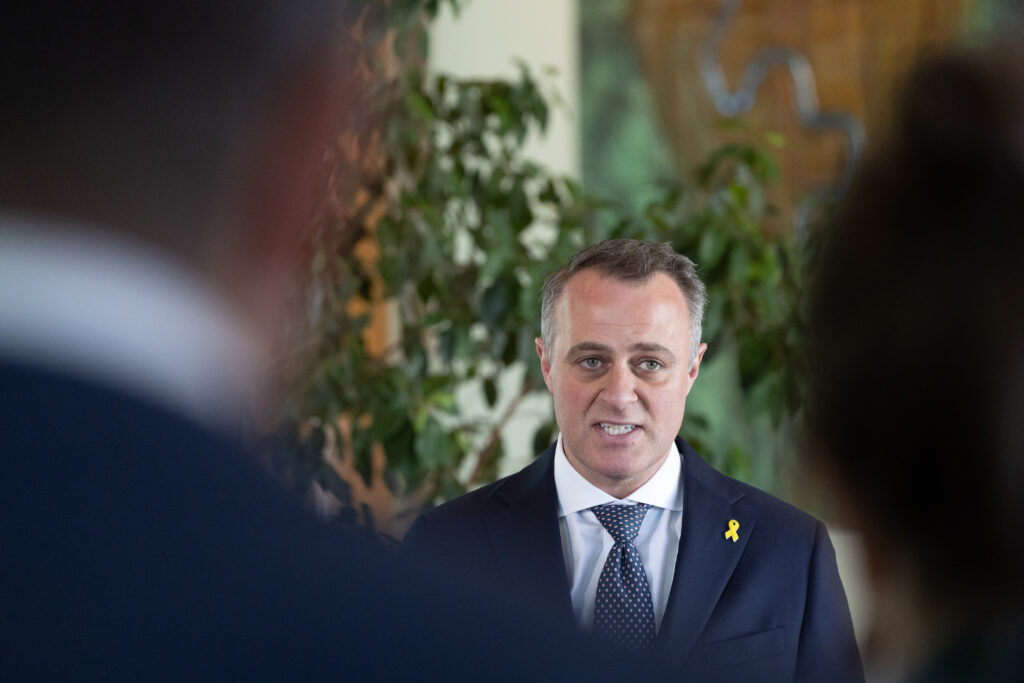
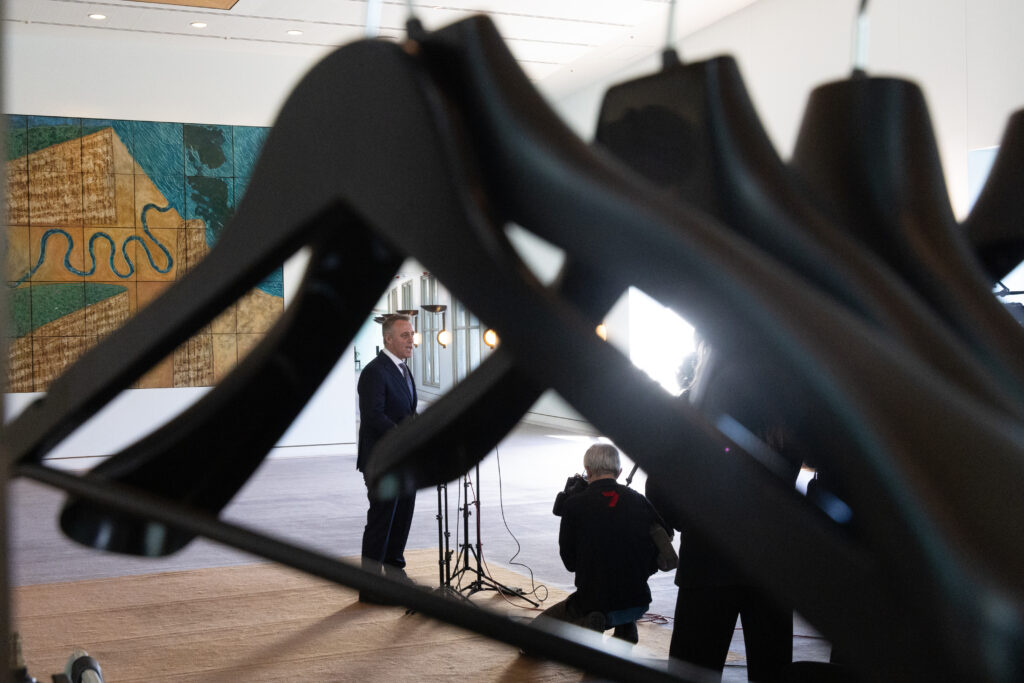
Thu 24 Jul
This blog is now closed.
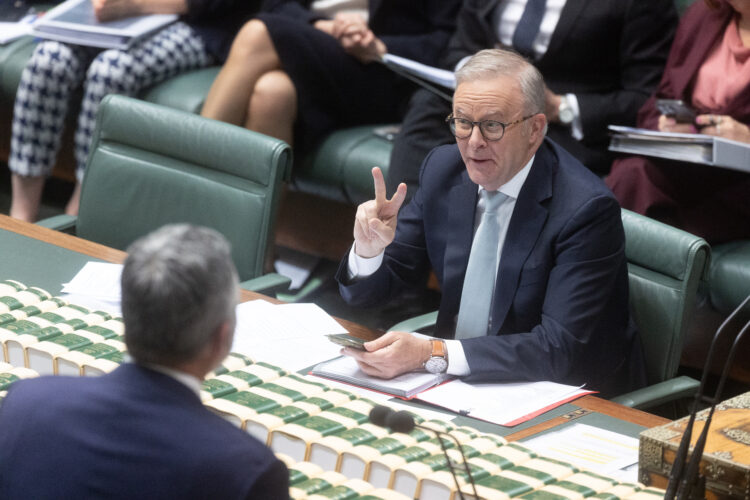
Tim Wilson is baacccckkkkk and in the Mural Hall.


The Miles Franklin literary prize will be awarded this evening.
Which is great – but the winner will have to pay tax on the prize for…reasons.
Worrying sick about loved ones under bombardment in Gaza induces acute anxiety and stress for Arab-Australian women trying to make it through the day.
Research published in The Lancet journal has examined the mental health impacts of ongoing wars in the Middle East and how they affect women connected to the region living in Australia.
University of NSW researchers found panic disorder symptoms, poorer quality of life and other psychosocial stress indicators only increased for the women affected by the current carnage, compared to other Australian-born and migrant women.
Symptoms appeared suddenly in multiple ways including rapid heart rate, dizziness, trembling, sweating and nausea.
“It’s like a panic attack, but it’s very much tied to a particular event,” lead author Susan Rees told AAP.
“In this case, the prevailing mass deaths, injuries and starvation.”
The events were prompting direct, visceral reminders for the women of their own experiences.
“Such as having their house bombed, fleeing for safety, having family members injured or killed, which was the most extreme,” Professor Rees said.
About 17,000 children are among almost 60,000 people killed in Israel’s retaliatory military assault on Gaza since October 7, 2023, the United Nations said.
It followed militant group Hamas attacking Israel, killing about 1200 people and capturing some 250 hostages.
The longitudinal study assessed 410 women living in Australia about 12-18 months before and during the ongoing war on Gaza, extending from October 2023 until December 2024.
The women were directly connected by birth or family to Gaza, the occupied Palestinian Territories and Lebanon, as well as migrant women from other non-Middle East countries and Australian-born women with no connection to the region.
One participant from the Middle East-connected group, which made up one-fifth of the total study, told researchers she felt like a robot: functioning but not fully engaging with her surroundings.
“This experience indicates that the person may be emotionally alienated and disconnected from daily life and routines,” Prof Rees explained.
“You’re just thinking all the time about your family and what’s going on, and you’re trying not to communicate it to children because you don’t want them to get upset.”
Another woman said she spent many sleepless nights telling her family in southern Lebanon to evacuate, after hearing radio reports saying Israeli forces were attacking their particular area.
“They can’t protect them directly on the ground and are trying to do it from thousands of kilometres away,” Prof Rees said.
The dire mental health consequences for such a large population in Australia could be prolonged unless there were targeted clinical interventions as well as political ones, she said.
Lifeline 13 11 14
beyondblue 1300 22 4636
The government has announced a ‘refresh’ to the membership of the Northern Australia Indigenous Reference Group, which is a key advisory body on boosting economic and social prosperity for First Nations people across the north.
From the statement:
Deputy Vice-Chancellor of James Cook University, Professor Martin Nakata, has been appointed the new IRG chair. Professor Nakata has more than 30 years of experience in Indigenous education, research and community engagement.
Other new appointments are:
They will serve on the IRG alongside returning members:
The IRG reports directly to the Minister for Northern Australia Madeleine King and Minister for Indigenous Australians Senator Malarndirri McCarthy and “provides practical advice to support the Government’s refreshed northern Australia agenda”.
Earlier this week, LaTrobe University hosted a public lecture: “The Australian Liberal Party: What has gone wrong? What is to be done?” with Professor Andrea Carson, former Attorney-General Professor George Brandis, Tom Switzer (executive director of the Centre for Independent Studies), former MP Cathy McGowan and columnist Sean Kelly.
Interesting reflections, of which I’ve picked out a few that struck me. You can watch the lecture yourself on the university’s website.
George Brandis and Tom Switzer, while identifying weaknesses in the modern Liberal Party, did not see it as facing an existential threat.
George Brandis identified five things that reduced the Liberal Party vote, of which the first two were most significant:
That doesn’t suggest a deep seated, profound, structural change or shift in the electorate (he believes)
Tom Switzer said (paraphrased)
Donald Trump, cost of living and interest rate cuts all cost the Liberals.
The Liberal Party has lost its free market roots.
Liberals face very real challenges: preselecting women, raising more money and stopping the haemorrhaging of metropolitan voters to the teals.
But the Liberals and Nationals will survive. Australia is essentially a 50-50 country. Circumstances can change very quickly in politics. What explains the ups and downs is “Events, dear boy, events”.
Cathy McGowan argued that the rusted-on two-party system is no longer serving people. The crossbench are delivering, they’re powerful, they use media well:
The conservative parties are swinging right. I’m from Victoria – it’s so clear that’s happening.
Australian people want to be much more engaged: “It’s my democracy and I care about it, I’m going to invest in it”.
Independent Zoe Daniel losing the seat of Goldstein because Tim Wilson ran a local, very strong campaign proves that when the major parties get their act together, when we get the competition that we need, they can win. There is “no such thing as a safe seat”.
Sean Kelly argued that the 30-year long shift away from the two major parties is a structural problem. In this election, it hurt the Liberals far more than the Labor party.
Ideological confusion from the major parties comes from inability to answer the question, “what should society look like?”
At a time the world was in enormous flux, Peter Dutton zigged and zagged.
The speakers generally agreed that Sussan Ley was a good choice for Opposition Leader and had done well so far; and that the Liberal Party needed to increase women’s representation:
Sean Kelly shocked at what a difference Sussan Ley has made already. Remarkable to see conservative positions without bully boy rhetoric.
The Liberal Party is mad to not adopt quotas for women. Every other approach has failed.
Cathy McGowan pointed out that the community independents without quotas got mostly women. The community wanted someone very clever who could represent them, it’s not just the gender.
The Liberal Party in my area is not representative, the Labor Party not at all. We can bring out 1,000 people to campaign. The majors can’t do that.
Politics is a service job, to represent. The parties have forgotten that.
George Brandis said the community independents won because they mobilised the community. The Liberal and Labor parties have much shallower roots in the community than they did a couple of decades ago.
Sussan Ley is a much more modern style of politician than Albanese, who has only ever worked for the party.
Tom Switzer argued that people say there’s no moderate wing of the Liberal Party in 2025 – but Sussan Ley is a moderate.
Every Liberal Party leader who has won from Opposition – Menzies, Fraser, Howard and Abbott – all hail from the right of the party, so being a conservative is not an albatross.
The one Liberal who won a teal seat was a bloke.
Finally, Sean Kelly said we should all break out of our habits of referring to the two-party preferred result. A more accurate way of looking at the landscape is 33-33-33. Parties need to work out how to reach people at the grassroots and figure out what sort of a society they want to offer voters.
Looking over the senate hansard from yesterday (yes, I know) I see that Greens leader Larissa Waters asked environment minister Murray Watt about his gas approvals:
My question is to the new Minister for the Environment and Water, Senator Watt. Peter Dutton promised to approve Woodside’s mega gas plant in the Burrup Peninsula within 30 days of the election. Not to be outdone in delivering for major political donor Woodside, the Labor government gave draft approval in just 15 days, conditionally approving a carbon bomb that emits more than all of the coal-fired power stations in Australia all the way out to 2070. Minister, will you cancel the conditional approval?
Watt:
I congratulate you on your election as Leader of the Australian Greens. I do look forward to you delivering on your commitment to work more constructively with the government in this term. I very much welcome those remarks you made. I assume the Greens heard the message of the last election—that is, being obstructive to progress on environmental matters is not the route to electoral success.
On the question you’ve asked, Senator Waters, as you say I have made a proposed decision to approve an extension to the existing onshore Karratha gas-processing plant on the Burrup Peninsula, made subject to strict conditions (which the government have not released. So no one knows what these ‘strict’ conditions are)
It hasn’t suited the Greens’ narrative around this topic, but the decision that I was required to make under the act related to the potential impact of that project on the incredible 50,000-year-old Indigenous rock art present on the peninsula.
What I said in the statement I issued on the day of my proposed decision was that the strict conditions that I had applied to the proposed decision (which have been kept secret) are particularly related to air emission levels and their potential impact on the rock art. The Greens have tried to conflate the issue of climate change with this decision, which was about the potential impact of this project on the rock art. (It’s all connected though isn’t it?)
The conditions that I have applied to the proposed decision are all geared towards the potential impact of this project on the rock art, and that impact has been central to my decision.
One other thing that the Greens have not wanted to acknowledge as it relates to this project and my proposed decision is that the government, in its first term, legislated the safeguard mechanism and strengthened the safeguard mechanism. I might point out that the Greens voted for those changes, so the Greens were comfortable with the safeguard mechanism, which requires this project to reduce its emissions by five per cent a year and become net zero by 2050
Independent Senator David Pocock, Member for Kooyong Dr Monique Ryan, Member for Mackellar Dr Sophie Scamps, Member for Indi Dr Helen Haines, Member for Curtin Kate Chaney, Jennifer Tierney MSF Australia Executive Director, Claire Manera, Former Emergency Coordinator Gaza who has recently returned from the frontline and Member for Chifley the Hon Ed Husic have accepted the petition calling to protect the people of Gaza to be tabled in the Senate.
Mike Bowers was there:
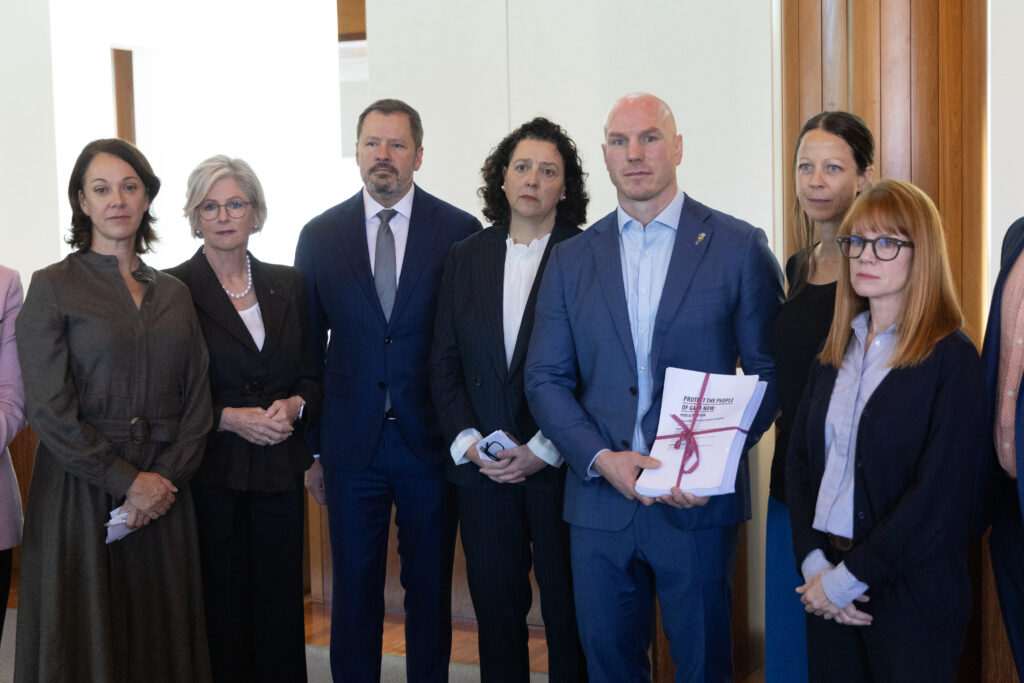
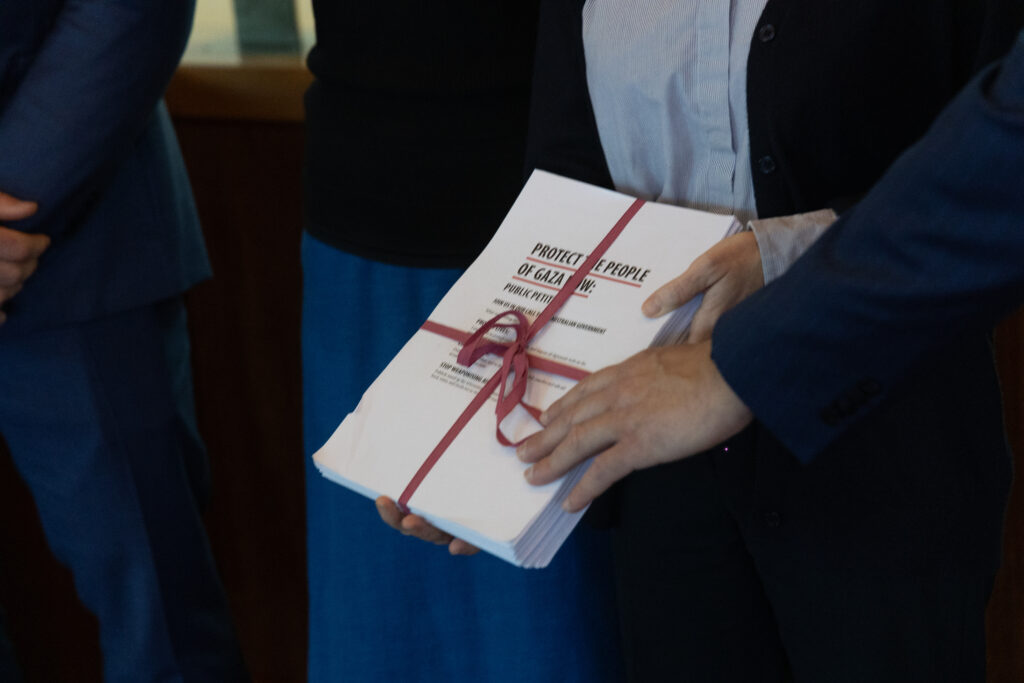
Despite the Australian government signing up to the statement calling for an immediate ceasefire and for the slaughter to stop, Husic was the only government member to attend. Just as he was the only government MP to attend the Vigil for Gaza
Agriculture Minister Julie Collins insists the decision to ease biosecurity restrictions on beef from the US has nothing to do with tariff negotiations.
It’s just a co-incidence that Donald Trump singled out Australia’s beef restrictions when he announced his “Liberation Day” tariffs in April.
Julie Collins, Minister for Agriculture, Fisheries and Forestry:
This has been the culmination of what has been a 10-year process. The US has been able to bring beef into Australia since 2019. In 2020 they asked to be expanded access. This process is at conclusion now and has taken around five years to conclude. The decision is purely based on science and a rigorous assessment by my department. Biosecurity risk assessment processes are very robust and I have faith in the officials in my department to do this appropriately. These are experts in the field. Australia’s biosecurity system is world renowned for a reason and this assessment has now been completed.
If you remember, Trump cracked it at Australia a little while back because we had import controls on American beef due to biosecurity concerns. Trump used that to threaten tariffs on Australian beef exports. That was mostly another act, as our own government has described it, of “self-harm” because all that would do was make beef more expensive for Americans, plus the Australian beef industry has no trouble finding other markets. Supply and demand, if you will.
Anyway, today the Australian government lifted the ban.
The general argument for this seems to be that this is a low-stakes way to give Trump want he wants and get him to back off. The Australian government seems convinced that biosecurity is now a non-issue, and it’s not like we would import heaps of American beef anyway. Then, presumably, when he makes other demands, Australian diplomats can point to other concessions and try to get him to make nice.
The other way to look at it is that such an approach completely misunderstands who Trump is and how he operates. It’s pretty likely he’s already forgotten about it and moved on (he does, uh, seem to have other things on his mind). We also already know that it doesn’t matter how much you give him, it will never be enough. Remember how we gave him $800 million for Aukus and then he didn’t exempt Australia from steel and aluminium tariffs? And then put Aukus to review? And then said he’d hit us with pharma tariffs and threaten the PBS? He doesn’t care.
There are some big risks here. If Trump thinks the Australian government will cave, that’s what he’ll expect next time, and the time after that. Once you’ve done it, it becomes harder not to do it again.
Plus, biosecurity isn’t exactly a non-issue. American industrial agricultural practises are, to put it in technical terms, pretty suss. And the Trump administration is busy rendering an already inadequate regulatory system virtually non-existent. Not to mention deporting everyone who works in the industry.
Everything is fine!
On the economic front though, the good news is that well… Australia has plenty of beef and so this probably won’t actually mean much.
We are pretty parochial about our food – especially our meat and vegetables – we generally only eat imported food if it has a sense of being “high quality” – which US beef is decidedly not.
In 2023 Australia exported around US$2.8bn worth of “bovine meat”, with a big chunk going to the USA. The reason is that the USA actually needs more beef than it produces itself and also (humble brag) Australia’s beef is better and cheaper, which is why McDonalds loves it.

So how much beef do we import? Try just $10.4m (note that is Million, not Billion). We mostly import some beef from Japan – think Wagyu/Kobe beef.

We export more beef to Kuwait alone than we import from the entire world.
The one area that it might affect things is the “frozen bovine” market where we imported US$16m (again million) all up and US$4.36m from the US in 2023

But again some context, in 2023 we exported US$4.73 BILLION worth of the stuff.

So while this will likely not sate Trump for long, and we need to keep a very close watch on how he is gutting the biosecurity service, economically it likely will not mean much.
Beef producers probably would prefer not to let the US import beef here, but I very much doubt you will be seeing US beef in any supermarket meat sections.
Last weekend, Tasmanians returned another power-sharing parliament.
It’s now up to the major parties to make it work.
In this week’s episode of Follow the Money, Leanne Minshull and Eloise Carr join Ebony Bennett to discuss why collaborative parliaments are popular and how our elected officials can make them work.